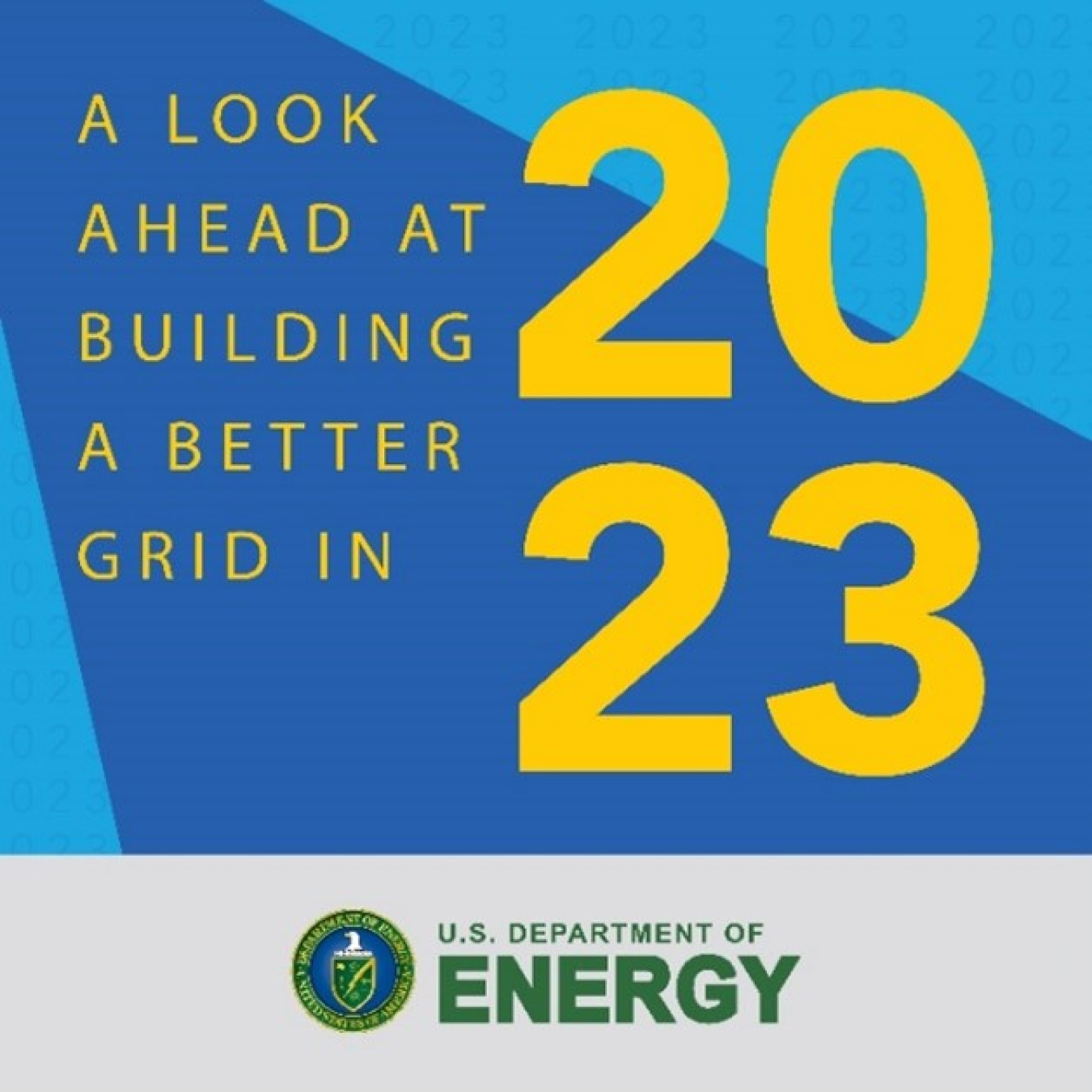The Building a Better Grid Initiative is supercharged for action in 2023 and beyond. Here’s how we’re planning for year two of the initiative.
January 20, 2023
The Building a Better Grid Initiative is supercharged for action in 2023 and beyond. Here’s how we’re planning for year two of the initiative.
Yesterday, U.S. Vice President Kamala Harris, Secretary of Energy Jennifer M. Granholm, Secretary of the Interior Deb Haaland, and Grid Deployment Office Director Maria Robinson joined other government and project representatives in Tonopah, Arizona, to celebrate the groundbreaking of the Ten West Link. The planned 125-mile, 500 kV, high-voltage transmission line will deliver power from Arizona to California and improve transmission system efficiency and reliability. Rapidly building transmission infrastructure across the United States, as well as upgrading and modernizing existing facilities and systems, are critical steps in the clean energy transition. Stepping up to ensure these essential steps are taken is the foundation of the Building a Better Grid Initiative.
As the Initiative kicks off year two this week, DOE’s Grid Deployment Office (GDO) is continuing to combine strategic planning and rapid, widespread deployment support to improve the U. S. power grid. What might that look like in 2023?
Maximizing positive impact and benefits
A successful transmission network requires deliberate planning and new approaches that identify long-term, flexible, and interregional solutions that meet national needs today and into the future. Today, a lot of transmission planning focuses on near-term needs within a utility’s specific service region. However, via the Building a Better Grid Initiative, DOE recognizes the need to consider forward-looking horizons to unlock more value and benefits locally and nationally. This forward-looking approach is part of a larger innovative shift in utility planning, and it aims to foster positive outcomes decades into the future given the typical lifespan of transmission infrastructure. In 2023, GDO is continuing work on three critical planning studies.
First, the National Transmission Needs Study (or Needs Study; formerly known as the National Electric Transmission Congestion Study) will identify high-priority national transmission needs while providing information about capacity constraints and congestion on the electric grid. While previous congestion studies were limited to consider historic congestion, this Needs Study is considering both historic and anticipated future transmission needs to support increasing renewable energy integration and electrification of transportation and buildings. In early 2023, the draft Needs Study will be released for public comment.
Second, GDO will continuing to conduct the National Transmission Planning Study (NTP) to identify pathways for large-scale transmission buildouts (regional and interregional) that boost broad-scale benefits, accelerate decarbonization, and maintain system reliability. This includes ensuring that the study results not only readily inform interregional exploration, but also test additional transmission options that lie outside of current planning. As we kick of 2023, NTP comments are currently being accepted. In addition, a public webinar sharing interim NTP results will take place in the first half of 2023 and results should be released in late 2023. In the interim, a set of frequently asked NTP questions is available online now.
Third, GDO is wrapping up a series of workshops focused on the Atlantic Coast to collect input and collaborate on strategies to enable the development of sustainable and equitable offshore wind transmission that minimizes impacts to ocean users and marine environments and creates benefits for coastal and underserved communities, as well as the Nation as a whole. The final Atlantic Coast-focused public workshop in this series will take place in Spring 2023 and will be followed by a series of workshops focused on the West Coast.
Deploy, deploy, deploy
In 2023, GDO also will continue to execute Secretary of Energy Jennifer M. Granholm’s mantra of deploy, deploy, deploy with a focus on providing financial support for projects across the United States. As mentioned in more detail earlier this week, the Transmission Facilitation Program (TFP), a $2.5 billion revolving program, is currently accepting its first round of proposals, which are due Feb. 1, 2023. Alongside this, applications for GDO’s Grid Resilience Formula Grants are due March 31, 2023 and now reflect funding for Year 1 and Year 2. The program will distribute $2.3 billion over five years. Applications are being processed as they are received, and funding will be allocated on a rolling basis in 2023. Finally, the three components of the $10.5 billion Grid Resilience and Innovation Partnerships Program have application deadlines in March, April, and May 2023.
Stay in the know with GDO
With all of this action planned in the coming months, GDO recognizes that staying on top of the information can be challenging. Our Grid and Transmission Program Conductor not only contains the most up-to-date deadlines for our various funding programs, but also provides an interactive tool to help determine the financing program most appropriate for individual projects. In addition, each month GDO’s newsletter highlights upcoming deadlines, forthcoming public webinars to learn more about individual opportunities, new funding announcements, and project selections. To stay up to date on public opportunities, webinars, newly issued requests for information or proposals, follow us on LinkedIn, and sign up for GDO’s monthly newsletter at DOE Grid Deployment Office (govdelivery.com).
Note: This blog post is part of a series in celebration of the one-year anniversary of the launch of the Building a Better Grid Initiative. Join us as we look at different components of the Initiative in action, learn about the accomplishments achieved, and get a preview of what’s to come. Learn more about the Building a Better Grid Initiative.
Find more Building a Better Grid celebration materials on One Year of Building a Better Grid

